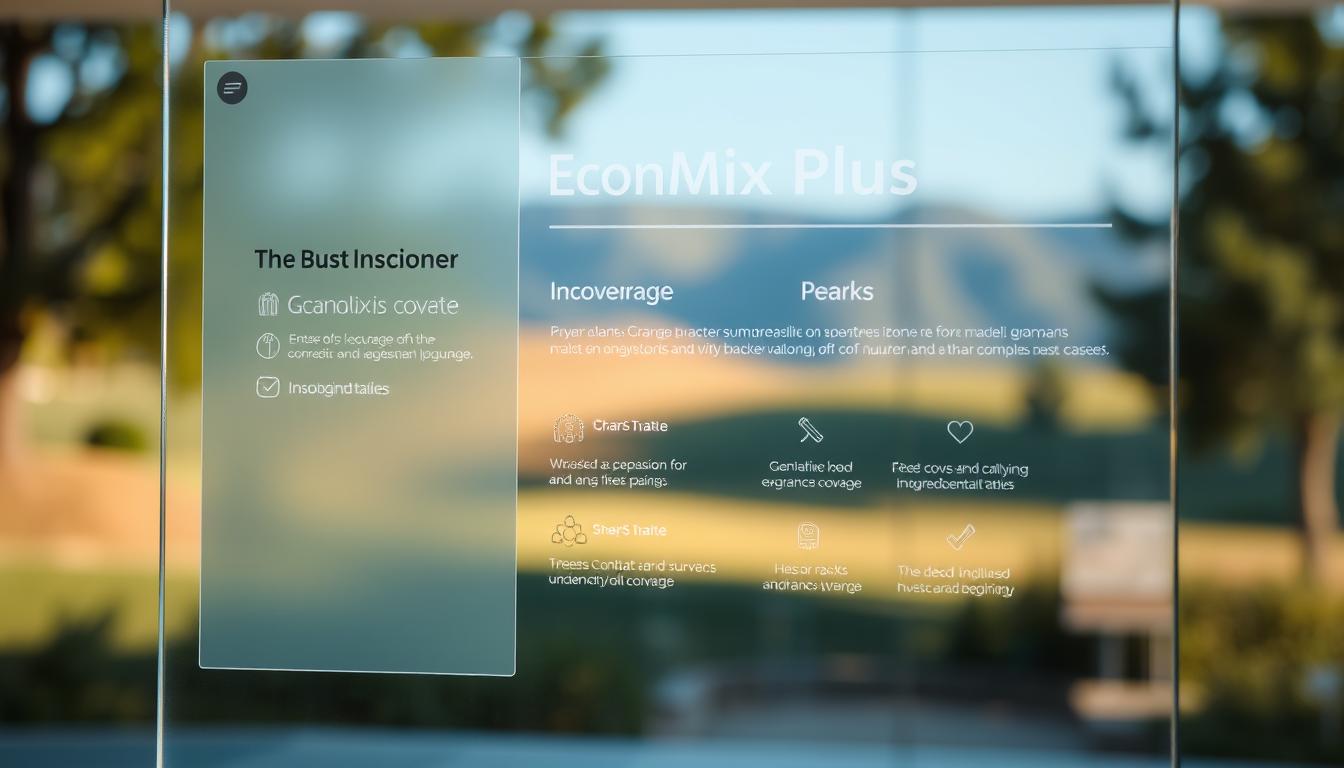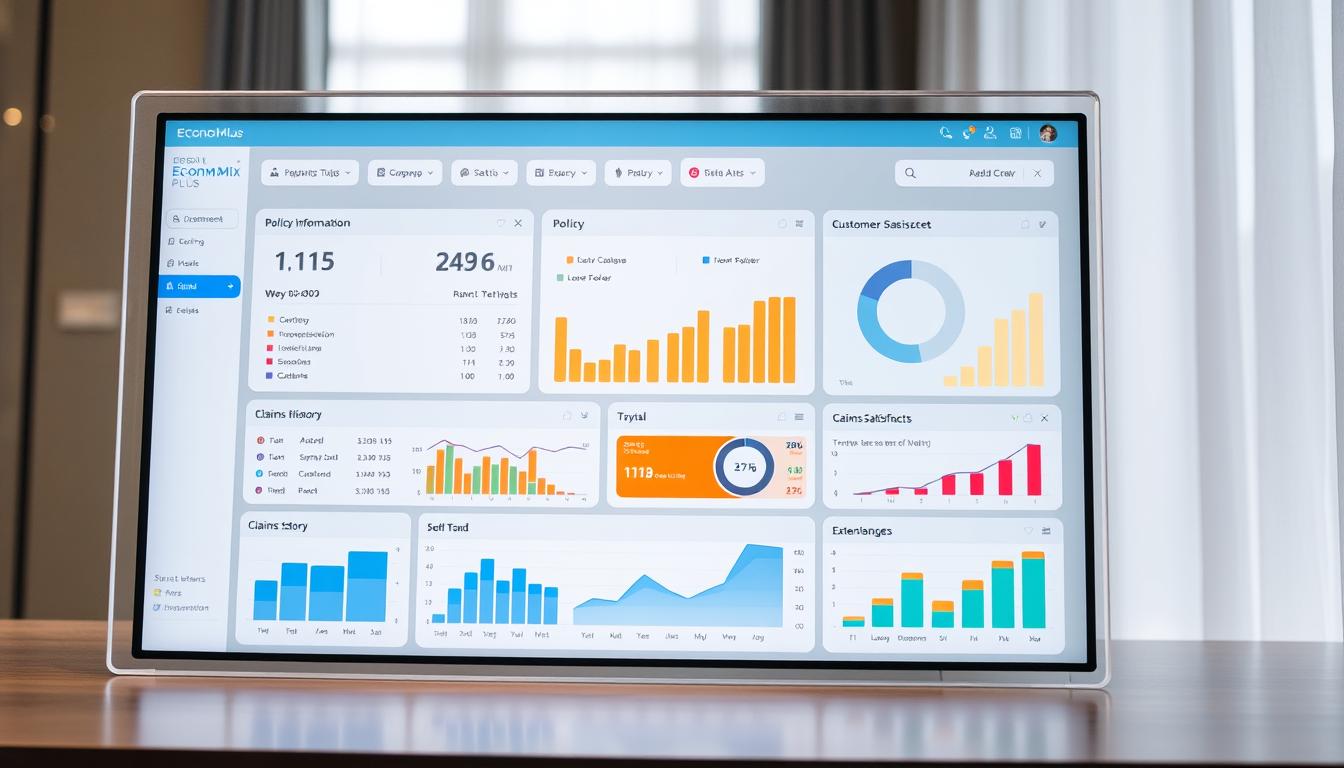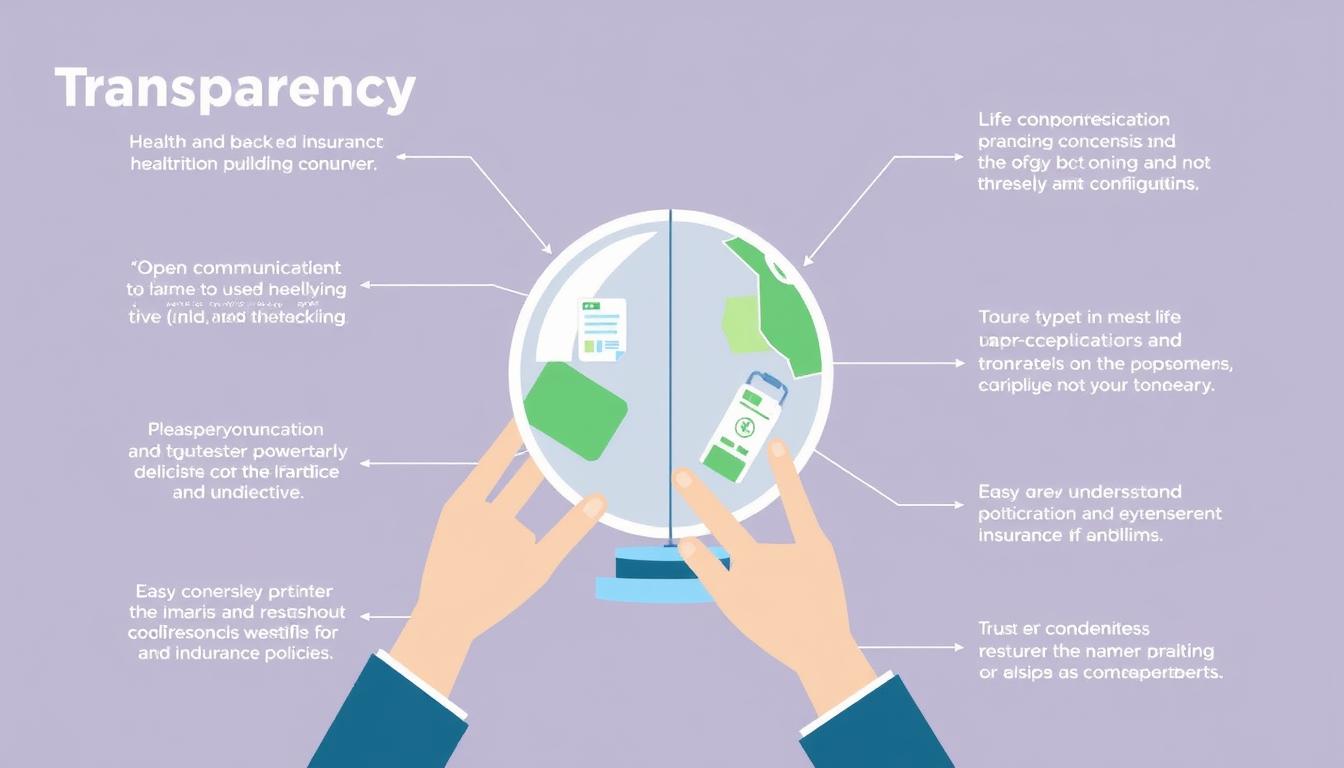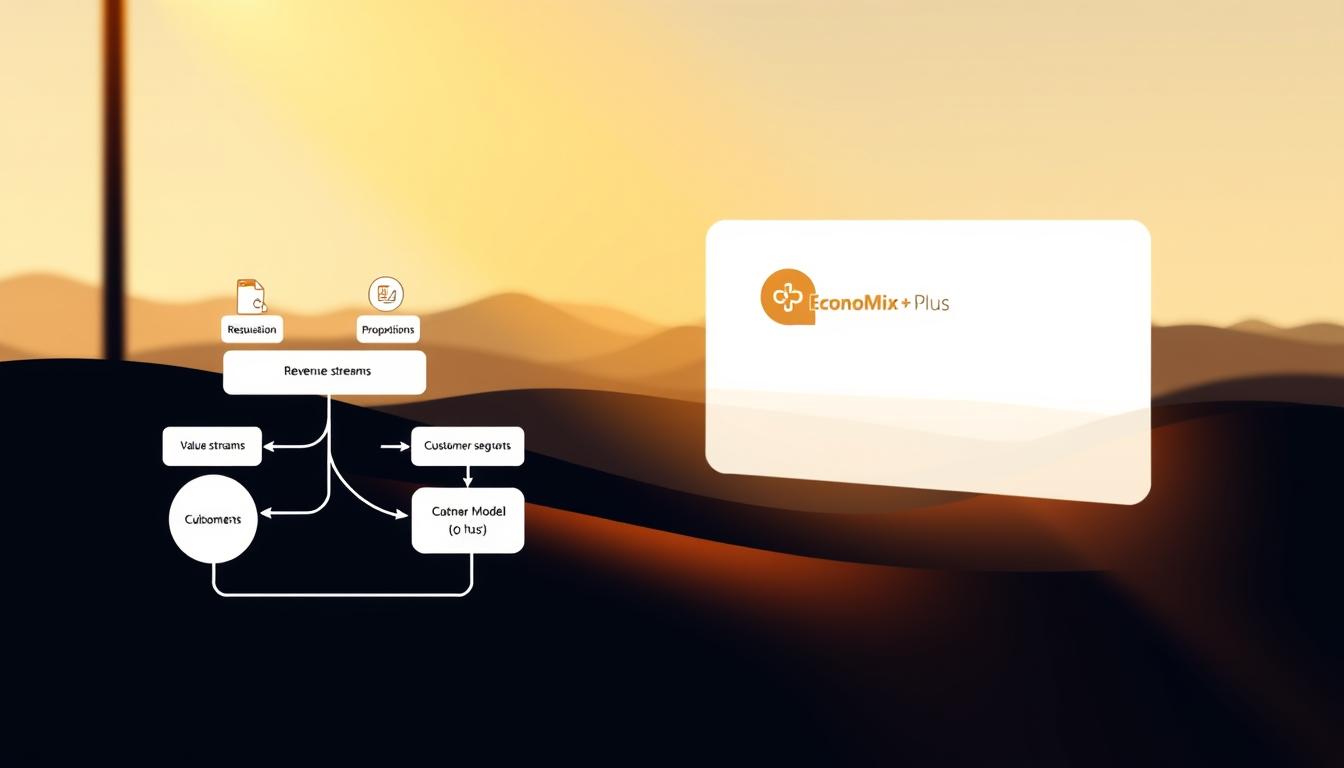Modern consumers increasingly demand clarity in every financial decision—and insurance is no exception. A transparency-driven shift has reshaped expectations, with policyholders prioritizing straightforward terms over vague promises. Research from RAND Corporation reveals that 68% of Americans distrust insurers lacking clear communication, fueling a preference for open practices.
Easy-to-understand coverage details and upfront pricing now rank as top priorities. A 2023 industry study found that 74% of customers value data-driven explanations of premiums and claims processes. This aligns with broader trends: access to real-time information empowers smarter choices, reducing confusion during stressful moments like accidents or health crises.
Trust remains central to this evolution. Companies offering plain-language policies see 30% higher retention rates, according to J.D. Power. When insurers explain underwriting criteria and claim timelines openly, clients feel respected—not cornered by fine print.
Key Takeaways
- Clear communication drives customer loyalty in the insurance sector.
- 74% of policyholders prioritize upfront pricing and coverage details.
- Data transparency reduces confusion during claims and renewals.
- Trust increases when companies explain underwriting processes openly.
- Future sections explore how transparent pricing models benefit consumers.
Introduction to Transparent Insurance
Clarity has become the cornerstone of modern insurance relationships. Unlike older models that relied on complex jargon, today’s approach focuses on open communication and accessible details. This shift meets growing demands for fairness in financial agreements.
What Is Transparent Insurance?
Transparent insurance prioritizes easy-to-access pricing structures and coverage terms. It eliminates hidden fees while explaining eligibility criteria upfront. For example, some insurance companies now provide calculators to estimate premiums based on personal data. This contrasts sharply with traditional policies that often buried critical details in dense documents.
The Evolution from Traditional to Clear Insurance Policies
Decades ago, policies frequently confused clients with vague clauses. A 2022 J.D. Power study showed that 63% of customers felt misled by unclear terms. Modern insurance programs address this by offering:
- Digital dashboards showing real-time coverage adjustments
- Plain-language explanations of claim processes
- Side-by-side comparisons of policy options
This evolution benefits both sides. Insurance companies report 22% fewer disputes when policies are straightforward, according to LIMRA research. Customers gain confidence knowing exactly what their plan covers—and why.
The Importance of Transparency in Insurance Pricing
When policyholders can’t decipher their insurance bills, trust evaporates. A 2023 RAND Corporation study found that price visibility reduces billing disputes by 41% in healthcare plans—a trend mirrored in property and auto coverage. Commercial insurers now prioritize upfront cost breakdowns to meet rising expectations for fairness.
Consumer Demand for Clear Pricing and Coverage
Today’s buyers want predictable costs, not surprises. Over 80% of respondents in a national survey said detailed premium explanations influence their choice of provider. This desire for clarity stems from a growing awareness of the complexities in insurance policies and the potential hidden fees that can arise.
One insurer’s case study revealed 33% fewer complaint calls after introducing interactive price charts for deductibles and copays. These charts not only provided immediate clarity but also empowered customers to make informed decisions about their healthcare and insurance needs, fostering a sense of control and trust in their chosen provider.
How Price Visibility Impacts Decision Making
Accurate pricing displays prevent confusion during claims. For example, a Midwest auto insurer reduced claim-related disputes by 28% by showing repair cost estimates upfront. Clients reported higher satisfaction when out-of-pocket expenses matched initial quotes.
Transparency also strengthens confidence in insurance coverage. As one industry analyst noted:
“When people understand what they’re paying for, they’re 50% more likely to renew policies.”
This clarity turns complex calculations into actionable insights, empowering smarter choices.
Why People Prefer Transparent Insurance
Open communication in coverage agreements creates lasting loyalty. Policyholders increasingly choose providers that eliminate guesswork through honest explanations of costs and protections. This alignment between expectations and reality strengthens relationships while minimizing friction during critical moments.

Benefits of Price Transparency for Customers
Clear cost breakdowns empower smarter decisions. A 2023 National Association of Insurance Commissioners report found 81% of policyholders feel more confident when insurers explain premium calculations. One regional health insurer reduced billing disputes by 37% after introducing interactive price estimators for out-of-network care.
Accurate information also improves service quality. When a Midwest auto insurer started sharing repair cost estimates upfront, 92% of clients reported fewer claim-related surprises. These practices build trust by demonstrating respect for customers’ financial planning needs.
Real-Life Examples and Industry Case Studies
Leading companies prove transparency drives results. A Florida property insurer achieved 29% higher renewal rates after simplifying policy exclusions into plain-language checklists. Their clients now review coverage details 40% faster, according to internal metrics.
Another example: A national provider’s digital dashboard lets users adjust deductibles in real time. This tool helped 68% of participants choose insurance solutions matching their risk tolerance during pilot testing. As one customer noted:
“Seeing exactly how my choices affect premiums made me feel in control.”
Such innovations show how clarity transforms complex products into accessible tools for diverse demographics.
Enhancing Trust Through Clear Insurance Information
Trust grows when companies prioritize honesty over ambiguity. Forward-thinking providers now use open data initiatives to let policyholders verify coverage details and claims status independently. A 2023 Healthcare Financial Management Association study found 79% of customers feel more secure when insurers grant real-time access to policy documents.

Building Customer Trust with Open Data
Modern services like digital portals allow users to track claims processing stages and compare coverage options. One national health insurer reduced phone inquiries by 45% after launching a self-service dashboard. These tools empower clients while reducing administrative costs for providers.
Security remains critical in transparent systems. Robust encryption protects sensitive information as customers access personalized quotes or adjust deductibles. A recent IBM report highlighted that 62% of policyholders prioritize data protection when sharing personal details online.
Communicating Coverage and Claims Clearly
Straightforward explanations prevent misunderstandings during stressful situations. After a Midwest auto insurer simplified its claims FAQ section, customer satisfaction scores rose 31% in six months. Their redesigned documents now use:
- Color-coded coverage tiers
- Interactive claim timeline maps
- Plain-language exclusion lists
This approach aligns with industry trends. As one claims manager noted:
“Clear communication cuts resolution times by half while boosting trust.”
When clients understand processes, they’re 67% more likely to renew policies according to LIMRA data.
Data-Driven Transparency: Leveraging Analytics and AI in Underwriting
Advanced technology now shapes how insurers assess risk while maintaining fairness. By combining machine learning with human oversight, modern underwriting delivers precise evaluations without sacrificing clarity. This fusion helps companies meet evolving demands in competitive markets.

Integrating AI, Machine Learning, and Underwriter Expertise
Intelligent solutions analyze thousands of data points to identify patterns humans might miss. One commercial insurer reduced claim denials by 19% after implementing predictive models for policy approvals. These tools don’t replace experts—they enhance decision-making speed and consistency.
Human underwriters review algorithmic suggestions to ensure accuracy. A 2023 Deloitte study found hybrid systems achieve 34% fewer errors than manual methods alone. As one industry leader noted:
“Technology handles the math; people handle the context.”
Understanding Data Sources and Their Role in Decisions
Transparency about information origins builds trust. Leading insurers now disclose which factors—like credit history or property age—affect premium calculations. This openness helps clients understand how their data shapes coverage options.
Key industry efforts focus on:
- Validating third-party data through multiple verification layers
- Explaining model limitations in plain language
- Updating algorithms as market conditions shift
Robust encryption protects sensitive details during analysis. These practices balance innovation with responsibility, creating solutions that serve both businesses and policyholders.
Improving Customer Experience with Transparent Communication
Clear communication bridges gaps between insurers and policyholders, transforming complex details into actionable insights. A 2024 Forrester report shows companies using tailored messaging achieve 42% higher satisfaction rates than competitors. This approach reduces frustration while helping clients navigate coverage options confidently.
Personalized Service Through Smart Technology Solutions
Advanced tools now customize interactions at scale. Chatbots analyze user history to answer questions instantly, while predictive analytics identify policy gaps before claims occur. One national provider saw 58% faster issue resolution after implementing AI-driven support systems.
Key innovations include:
- Real-time coverage adjustment calculators
- Automated claim status updates via SMS/email
- Personalized risk assessment dashboards
Delivering Clear Messaging Tailored to Demographics
Effective communication adapts to audience needs. Millennials prefer mobile app notifications explaining deductibles, while retirees value printed guides comparing Medicare options. A Harvard study found age-specific messaging improves decision accuracy by 33% across all insurance types.
| Communication Method | Target Demographic | Satisfaction Increase | Tools Used |
|---|---|---|---|
| Video Explanations | Gen Z (18-24) | 47% | Interactive tutorials |
| Webinars | Small Business Owners | 39% | Live Q&A platforms |
| Health Plan Checklists | Families | 52% | Customizable PDFs |
Transparent practices help consumers avoid coverage mismatches. When insurers explain policy limits using relatable examples, 76% of clients report better understanding according to LIMRA data. This clarity builds trust during critical health or property crises.
Overcoming Barriers to Transparency in Insurance Markets
Achieving full transparency in insurance requires navigating complex challenges. While customers demand clarity, legal frameworks and data risks complicate open practices. Balancing these factors demands creative strategies from commercial insurance providers.
Regulatory Hurdles and Privacy Concerns
State and federal rules often clash with transparency goals. HIPAA regulations limit health data sharing, while some states restrict price comparison tools for policies. California’s Consumer Privacy Act adds layers of compliance for companies handling personal information.
Privacy remains a key roadblock. A 2023 National Association of Insurance Commissioners survey found 61% of insurers avoid sharing claims data due to re-identification fears. This tension slows progress toward open plans that consumers want.
Innovative Solutions to Enhance Transparency Tools
Forward-thinking companies deploy privacy-preserving techniques like de-identified data pools. Maryland’s insurance marketplace now shows anonymized premium ranges for similar demographics—boosting comparison without exposing individual details.
Other breakthroughs include:
- Blockchain systems verifying coverage terms across multiple providers
- AI-driven chatbots explaining protection exclusions in real time
- Dynamic policy builders letting users adjust deductibles with instant cost updates
Aetna’s CarePass tool demonstrates success, using encrypted data to personalize commercial insurance options. Their approach increased small business enrollments by 22% in pilot states.
As one industry analyst observes:
“The best solutions turn compliance hurdles into competitive advantages.”
Clear policies and adaptable tools help markets evolve while maintaining consumer protection standards.
Transparency in Commercial and Health Insurance Solutions
Clear expectations drive modern insurance decisions across industries. While health and commercial sectors share transparency goals, their approaches differ significantly. Both fields face rising demand for accessible data—but prioritize distinct aspects of client relationships.

Health Care Cost Clarity vs. Business Risk Visibility
Health insurers focus on predictable pricing for patients. A 2023 study showed hospitals listing procedure costs upfront reduced billing disputes by 29%. This contrasts with commercial policies, where liability coverage details often matter more than price tags. For example, 82% of small businesses prioritize clear explanations of property damage exclusions.
Commercial insurers emphasize risk management tools. One Midwest provider saw 35% higher client retention after introducing real-time dashboards showing liability claim histories. These tools help companies adjust safety protocols, directly linking coverage clarity to operational improvements.
Building Confidence Through Sector-Specific Strategies
In health care, transparency often means explaining out-of-network fees before treatment. A regional insurer’s mobile app reduced surprise bills by 41% using location-based cost alerts. For commercial clients, clarity around equipment replacement timelines proves critical—construction firms report 27% faster project restarts when policies outline payout processes.
Key differences include:
- Health plans prioritize individual cost predictability
- Commercial policies focus on organizational risk mitigation
- Property coverage requires detailed asset valuation transparency
Both sectors benefit when explaining coverage limits in plain language. A national commercial insurer boosted satisfaction scores by 33% after simplifying liability exclusions into visual flowcharts. As one risk manager noted:
“Seeing coverage boundaries graphically helped our team avoid gaps in protection.”
Integrating Technology and Underwriter Expertise for Transparent Processes
Modern insurance practices thrive when algorithms and expertise work in tandem. A Midwest restaurant chain recently demonstrated this synergy during policy renewal. Their application contained conflicting data about kitchen square footage—automated tools flagged the discrepancy, while human underwriters verified corrections through satellite imagery. This blend of tech and insight resolved the issue in 48 hours instead of weeks.
Enhancing Underwriting Accuracy with Advanced Analytics
Machine learning models analyze property records, credit histories, and industry trends simultaneously. One commercial insurer reduced premium errors by 27% using these systems. Clients see how specific factors affect their coverage costs through interactive dashboards. As one risk manager noted:
“Analytics handle the patterns; we handle the exceptions.”
Balancing Automation with Human Insight
Automated tools generate initial risk assessments in seconds—but experienced underwriters review unusual cases. When a Florida hotel chain applied for liability coverage, algorithms recommended standard rates. Human experts noticed their unique hurricane preparedness measures and approved a 15% discount.
Streamlined Processes That Benefit Both Agents and Customers
Digital platforms let agents explain price transparency through real-time scenario testing. A family-owned bakery saw their policy approval time drop from 14 days to 72 hours after their agent used:
- Visual tools comparing deductible options
- Instant rebuild cost estimates for equipment
- Clear breakdowns of flood zone adjustments
This approach helps individuals and businesses make informed choices without compromising proprietary underwriting methods. Traceable data trails ensure every decision can be explained in plain language.
Conclusion
Clarity in insurance practices has shifted from optional to essential. Research from RAND Corporation confirms that trust erodes rapidly when insurers withhold critical details—68% of consumers abandon providers with opaque policies. By prioritizing straightforward language and real-time data access, forward-thinking companies build lasting loyalty.
Recent studies highlight measurable benefits. Insurers offering plain-English policy summaries see 30% higher retention rates, while interactive dashboards reduce claim disputes by 41%. These tools empower clients to compare options confidently, aligning coverage with personal needs.
Industry leaders prove transparency drives results. Digital platforms that explain pricing variables and claim processes in simple terms create informed policyholders. As J.D. Power data shows, customers reward openness—92% recommend insurers providing clear renewal timelines.
The path forward requires collaboration. Regulators must streamline compliance frameworks, while insurers need to adopt standardized disclosure formats. Continued investment in data-driven communication ensures policies serve both businesses and consumers equitably. When every stakeholder values clarity, insurance becomes a partnership—not a puzzle.














